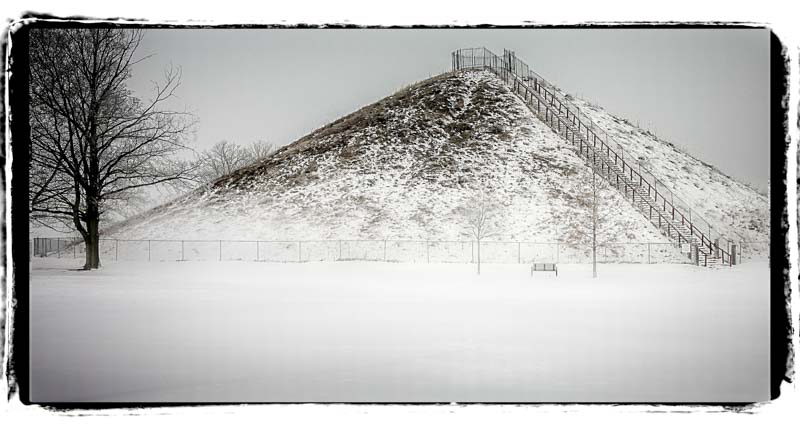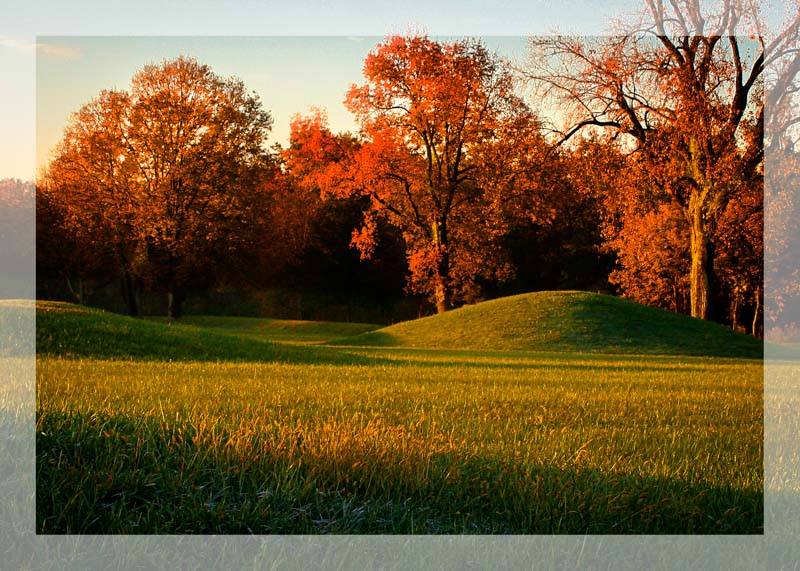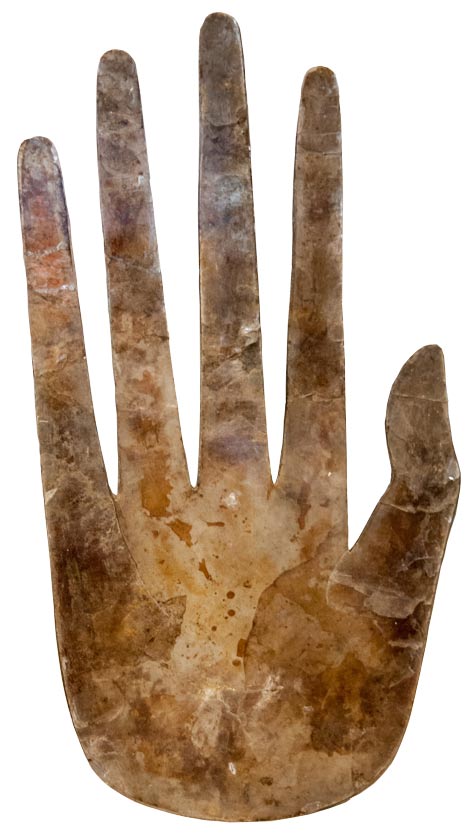- Ohio History in 2000 Words
- Mound Builders
- Native Ohioans
- The Ohio Company
- Ohio's Wood Forts
- Indian Wars
- War of 1812
- Ohio's Canals
- Ohio's Road
- Scenic Railroads / Museums
- Underground Railroad
- Civil War in Ohio
Evidence of the Mound Builder Culture existed in Ohio as far back as 1000 B.C. and remained active here until around 1200 A.D. which is more than 2000 years. Ohio has been a state for just over 200 years which makes us the new kids on the block and still trying to figure out which way our streams flow. This culture appears to be part of a much larger civilization that occupied much of the Western Hemisphere.

Miamisburg Adena Conical Mound
These people seemed to be part of a highly organized and prolific civilization that had spread across southeastern North America and up through the Mississippi River watershed, which includes Ohio. Prehistoric evidence suggests that a few of their large population centers may have been home to an estimate 500,000 people or more. Although Ohio had some large cultural centers, none were on that scale, but nonetheless, there were numerous large urban centers here that we are only are just beginning to get a picture of their size and scope.
We know that these pre-historic civilizations date back over a span that contemporary archeologists have broken into 4 basic time periods covering 1000s of years. These periods are identified by items that we have uncovered through archeological explorations that include recovering the tools they used, the ornaments or decorations they created, the pottery they created, and the development of their agricultural practices.
Imagine looking at small pieces of broken pottery and deciding what those people were like based on those little details. But that's what archeologists have done over the last century or so and that is why concepts of these people change with time. The more details the archeologists find, the clearer the picture becomes.

Adena Effigy Pipe uncovered in an Adena Mound in Chillicothe. This item has been designated as the official Ohio Artifact.
With today's technology, DNA evidence can only go so far as to identifying groups of people. Ancient mortuary practices make obtaining genetic samples from ancient cultures extremely limited. Projecting cultural theories from these extremely rare samples based on just a few individuals that may or may not be representative of the ancient group is problematic. Regardless of these qualifiers, there are some hints as to the origins of these cultures.
Some of the DNA evidence has found a mutation similar to mutations found in Asian cultures today. This specific mutation found in the Hopewell Mound group has been found here in North America and in South and Central America. This suggests that North American Mound Builders were a distinct group and not directly related in any significant way to Native Americans that 17th Century Europeans encountered when they arrived on the east coast of North America. While there were some common genetic similarities, those would most likely result from intermingling of cultures at some point in time.

Hopewell Burial Mounds, Mound City, Chillicothe
The DNA study also concludes that the Adena and Hopewell cultures shared the same DNA traits, while the Fort Ancient Culture and the Glacial Kame DNA samples were significantly different from the Adena / Hopewell samples. Again, the number of DNA samples are extremely small.
Additionally, it was found that individuals in which samples were taken, were not related to other individuals buried in the same mound. In other words, in this particular study, the bodies of individuals found in this one particular mound were not of the same family.

This brings up the point that before the Mound Builders arrived here, there were already a different group of people living here. These were the nomadic clans following the large herds. Then the Mound Builders came here from some place else. The nomadics didn't suddenly become Mound Builders. They were two distinct groups, that most likely mingled, but not in sufficient enough numbers to create a different group.
©
Ohio City Productions, Inc.
All Rights Reserved.
